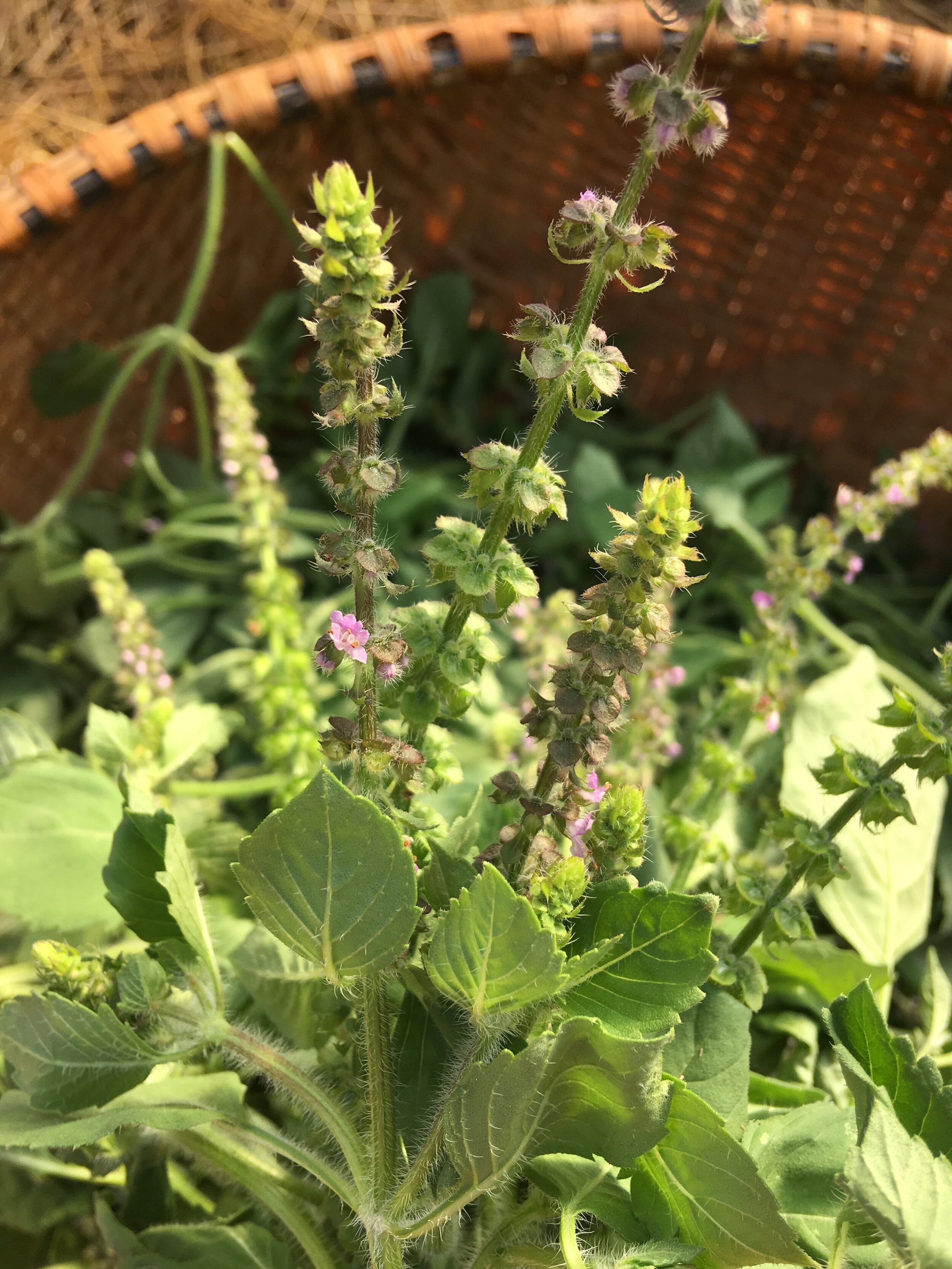By Sophie Cassel, herbalist, gardener, educator and RWP employee.
Of all the ways of preserving herbs, I think that vinegar infusions really capture the essence of summer in a way that lasts all year. At its foundation, a vinegar infusion is super simple: Chop up flavorful herbs, pack them into a jar, and cover with apple cider vinegar. Let the herbs infuse into the vinegar for a couple weeks, then strain for a punchy liquid that is versatile, healthful, and pretty tasty.
Apple cider vinegar (ACV) is the vinegar of choice, but other vin aigre (translated to “sour wine”) like red wine, white or balsamic are also viable options, depending on what your final product will be. Vinegars are a natural product of the fermentation and winemaking process, and have been used across cultures and generations to preserve and flavor food and beverages. In the northeastern US, apples were originally grown to produce cider and apple jack, and so cider vinegar has been our locally abundant source of acetic acid, the chemical responsible for that puckery tang that is so indispensable to our salads and pickles.
Many folks are familiar with infusing vinegars for salad dressings- adding a couple sprigs of rosemary and thyme and a few cloves of garlic into the vinegar bottle can add complexity to a simple oil-and-vinegar dressing. But did you know that infused vinegars also lend themselves to sweet concoctions?
The first time I fell in love with an herbal vinegar was when a friend, faced with a glut of tulsi flowers from her garden and uninterested in drying the lot, shoved the herb bunches into a jar with apple cider vinegar and let them sit on her kitchen counter until she almost forgot about them. Weeks later, she gave me a sample of the strained liquid. The vinegar had absorbed and preserved all the delicate floral flavors of the tulsi, and it tasted just like we were back in the heat of July.
Since then, I’ve been getting creative with different herb combinations, and adding honey or molasses to amp up the sweetness of my “elixirs”. When made in small batches, infused vinegars are a fun way to let your inner flavor wizard come through, and delicious local vinegar is inexpensive and easy to come by. Let yourself be guided by the bounty in your garden and your tastebuds, and you’re sure to come up with some successful combinations of your own. Below are a few traditional styles of vinegar infusions, with some ideas for herbs and spices to use.
Switchel: Also known as “haymaker’s punch”, this is a classic beverage drunk by northern farm workers while working through the heat of the day. Switchel usually includes ACV, honey or maple syrup, and water, with herbs steeped in for flavor. It functions much like a home-made sports drink, with the vinegar and sweetener providing much-needed electrolytes and salt. Try infusing a jar of vinegar with ginger, thyme and lemon, and keeping it on your counter, ready to add to your sweetener and water for a refreshing beverage that can be drunk throughout the day, even if you’re not making hay.
Shrub: These vinegars are infused with seasonal fruit and honey to make a luscious syrup. Added to cocktails or sparkling water, shrubs are tart, sweet, and deeply refreshing on a hot summer’s day. Added to a bit of hot water in the winter, it brings to mind the flavors of summer. Try a combination of strawberries and thai basil, or blackberries and raspberries with anise hyssop. The color of the berries will seep into the vinegar, adding a visual element to any beverage.
Fire Cider: This spicy concoction has been a staple of the kitchen medicine community for generations, receiving added attention in past years as the fight to prevent the trademarking of the name went national. Kitchen staples like onion, garlic, horseradish, cayenne and black pepper are chopped and added to vinegar and honey, then strained when the brew is nicely potent. Taken by the spoonful or added to a hot toddy, Fire Cider is sure to clear the cobwebs from your immune system and provide some internal warmth in the depths of winter. If you’re excited about Fire Cider, a new book compiled by Rosemary Gladstar dedicated to the topic will give you ample recipe ideas and inspiration.
Infusing herbs in vinegar is so quick and simple, you’ll soon find yourself making a new batch every week, capturing the seasonal shifts of your garden. Make sure to label every jar with the date you made it and the herbs you added in. Infused vinegars are safe for everyone when diluted, and make an excellent offering to kiddos or folks who aren’t drinking alcohol. They also can help jump start digestion before a meal. The possibilities are as varied and abundant as your garden!
Further resources:
Folk Medicine: A Vermont Country Doctor’s Guide to Good Health. Dr. D.C. Jarvis. 1950’s book, makes some wild claims but is a fun read and a portal back in time. His office is preserved at the Shelburne Museum!
Salt, Fat, Acid, Heat. Samin Nosrat, 2017. Specifically the chapter on acid, but this entire book is a treasure trove.
Fire Cider! 101 Zesty Recipes for Health-Boosting Remedies Made with Apple Cider Vinegar. Rosemary Gladstar, 2019. The “godmother of Western herbalism” and the originator of Fire Cider, Rosemary is an enormous resource to the beginning herbalist.



